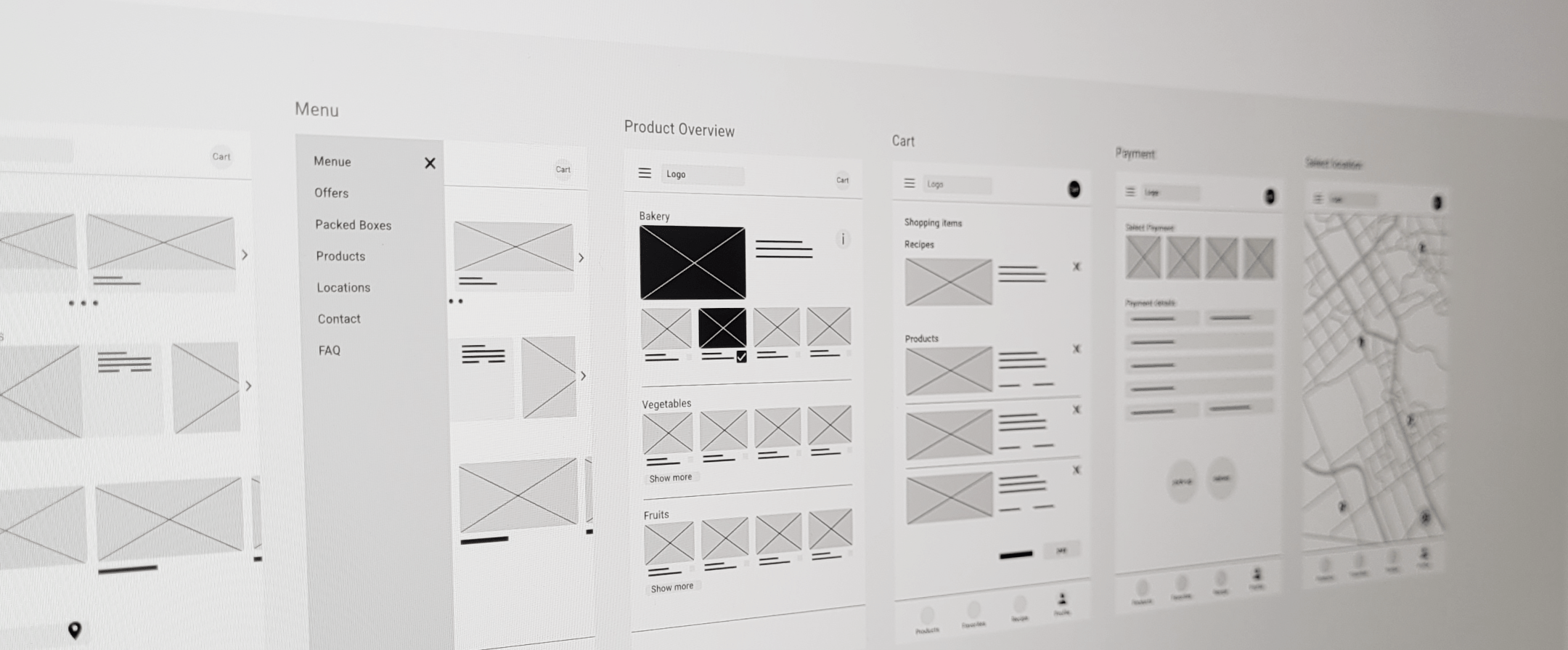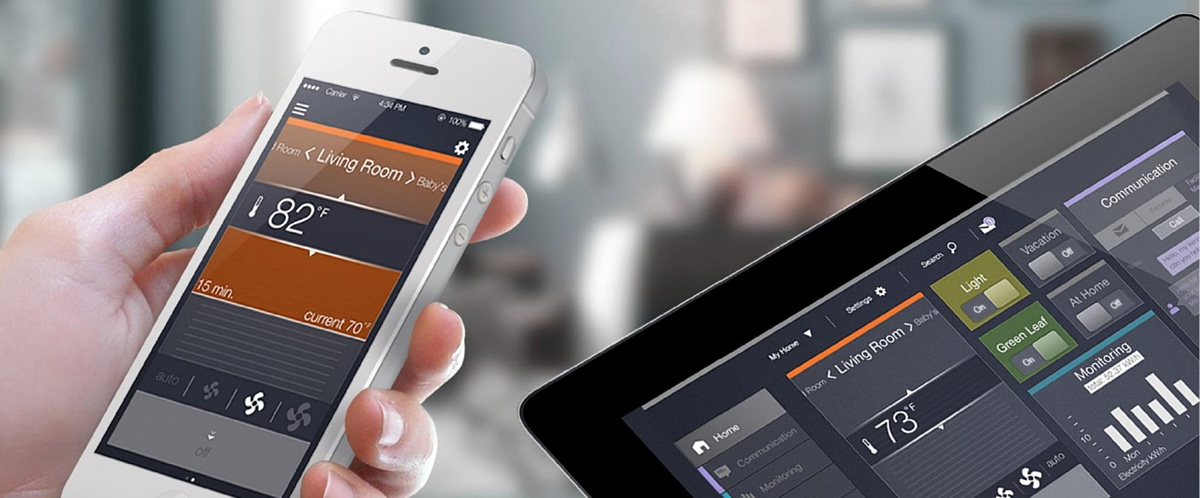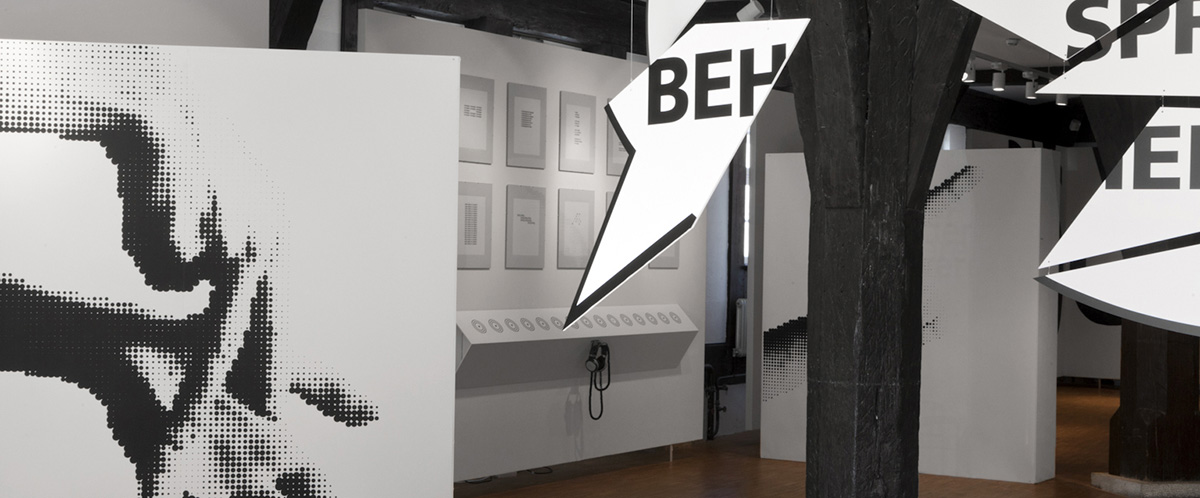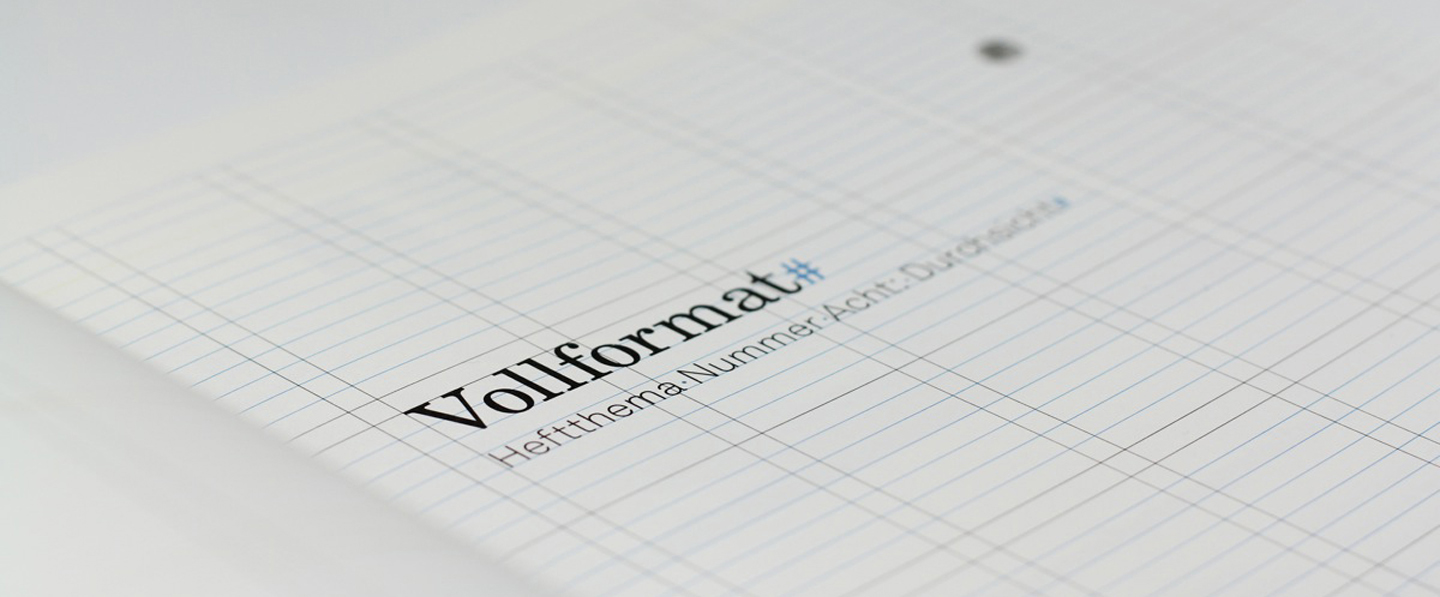Development of an remote onboarding concept that all stakeholders will inspire
The Mission
After the client company no longer has office space and only works remotely, the onboarding of new employees is increasingly difficult. In addition, long-time employees are also terminating their employment because they are finding it increasingly difficult to cope with the new work situation. My task was to determine solutions for this problem. Development of innovative ideas for an easy and attractive remote onboarding process, that integrates new employees into the existing „We are Family Team“.
Duration
2 weeks part-time
Design Thinking Workshop
Lead through all design thinking phases
Roll
Project support and coordination as design thinking master

Phase 01 – Empathize
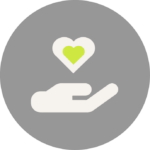
In the first phase of the process, we focused on the problems and challenges we want to approach. What problem does our customer or user have? Who are the stakeholders? How does our user think, what does he want? With the help of various methods, we shaped a holistic picture in the team which was based on assumptions. Finally, the first „how might we“ question was defined.



„How might we help „Mayer Solution Technik“, with innovative ideas, design a smooth integration and onboarding process despite remote work, in order to stop fluctuation and at the same time strengthen the cohesion of the „We are Family Team“ in the different departments.“
Phase 02 – Observe
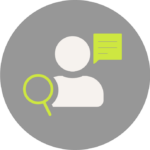
In the second phase we dealt with the individual wishes, needs and goals of the users. First, we used job(s) to be done. Then we interviewed the users and created affinity boards.
Overall, we learned that onboarding is mostly connotated negatively. Only a few people were able to report positive things. The needs of the users matched each other several times.

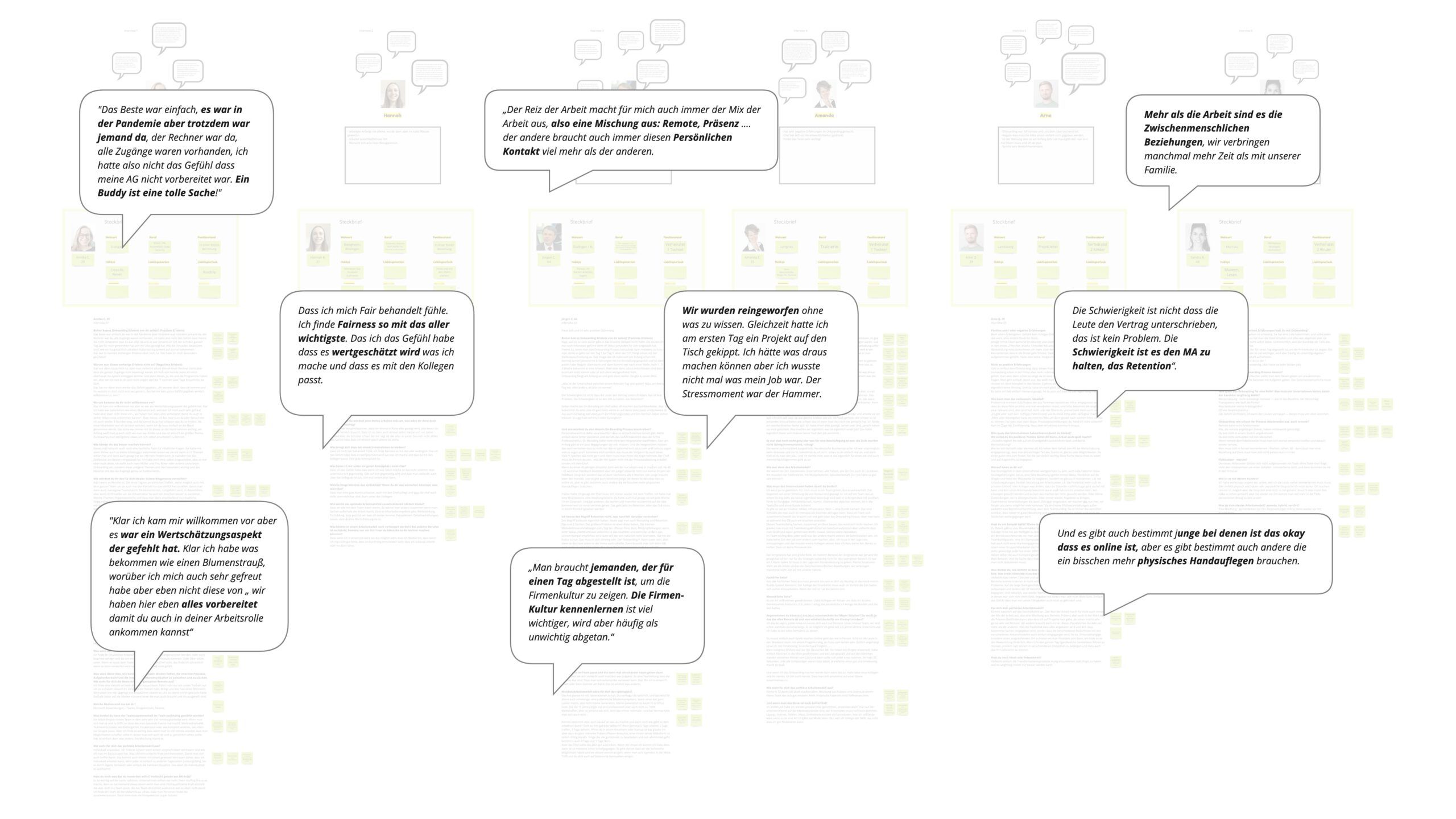
Phase 03 – Define

In a deep dive, we clustered all insights from the interviews in a synthesis board, into statements, needs and groups of people. Based on this, three personas were created: an applicant with an affinity for technology, an applicant who does not get along with technology and a long-term employee. With the personas we can better empathize with the user in further steps. This phase concludes our analysis phase.



Phase 04 – Ideate
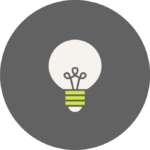
Now it was time to brainstorm ideas. In the ideation workshop, ideas were developed with quantitative and qualitative methods. Finally, these were elaborated with the help of Idea Napkins.


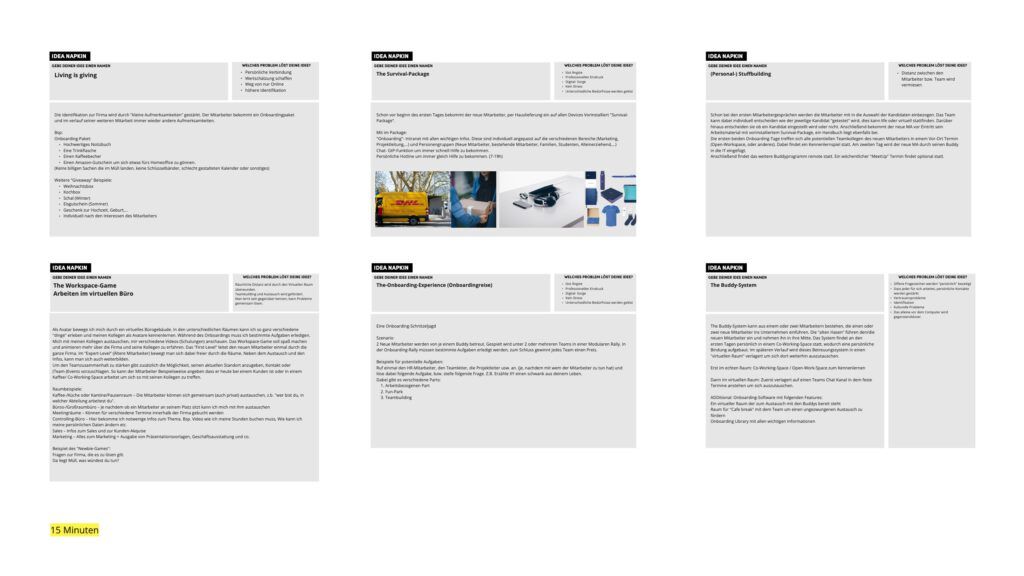
Phase 05 – Prototype

To make the ideas more tangible, we went into prototyping. First, all ideas were tested with the HOW-NOW-WOW-CIAO method.
The individual ideas were further developed and aligned with the personas. Due to time constraints, the „prototypes“ mainly visualize the flow of the individual onboarding phases.
Concept 01

Concept 02

Phase 06 – Test
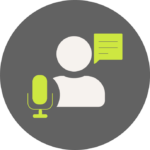
Finally the ideas were tested remotely with the end users. The participants were guided through the individual onboarding phases. Starting with recruiting, through onboarding to retention. We received mainly positive feedback. Most users can now better imagine working exclusively remote based on the ideas.
„With this idea, interpersonal contact would also finally be back. I never thought you can so much personality in remote work. I like that very much.“
The impact
Even if remote work is considered positive by the majority of society, we must work prudently not to lose sight of people and their needs for interpersonal relationships. While most problems are the same, there are a vast variety of ideas to address them. Often it is the small adjustments that have a big impact.
